Book Reviews: Dolmage, Yergeau, and Estreich
Dolmage, Jay. Disabled Upon Arrival: Eugenics, Immigration, and the Construction of Race and Disability. The Ohio State University Press, 2018.
Yergeau, Melanie. Authoring Autism: On Rhetoric and Neurological Queerness. Duke University Press, 2018.
Estreich, George. Fables and Futures: Biotechnology, Disability, and the Stories We Tell Ourselves. MIT Press, 2019.
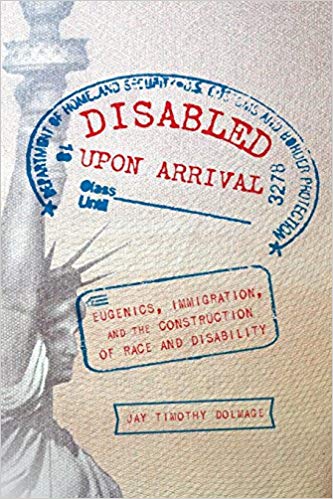
Throughout Disabled Upon Arrival: Eugenics, Immigration, and the Construction of Race and Disability, Jay Dolmage returns to a quotation from Angus McLaren that the “chief success” of Canadian eugenicists was not in specific actions or policy changes, but “in popularizing biological arguments” (4). This emphasis on public argument about the body underscores not only a key role for rhetoric in understanding eugenics, but the wider importance of disability studies beyond the niche interest it was once considered. As Dolmage argues in his earlier book, Disability Rhetoric, disability studies and rhetoric need each other, just as they share a goal to reimagine troublesome and entrenched social relations. This review discusses three recent books that investigate how rhetorics about disabled bodies impact not only the lives and treatment of disabled people, but issues as diverse as race, immigration, identity, biotechnology, and rhetorical theory itself: Disabled Upon Arrival by Dolmage, Authoring Autism: On Rhetoric and Neurologiocal Queerness by Melanie Yergeau, and Fables and Futures: Biotechnology, Disability, and the Stories We Tell Ourselves by George Estreich. All three books show how institutions and nondisabled people have popularized biological arguments about the value of certain bodies—some of these arguments are directly about disability, while others cast disability in a shadow.
Disabled Upon Arrival is an analysis of archival materials related to Ellis Island and Pier 21, often thought of as the Canadian Ellis Island. Dolmage builds on Disability Rhetoric, not only in defining rhetoric as the “strategic study of the circulation of power through communication,” but in his goal to use rhetorical analysis to reimagine power relations (2). Dolmage argues that, in eras of “intense rhetorical spin,” rhetoric is especially important for understanding “how messages can be camouflaged, how our attention might be diverted from one message by another, how a message desires a particular form of engagement to retain its power, and so on” (2). The book is divided into four sections: “Island” and “Pier” analyze Ellis Island and Pier 21, respectively, as rhetorical spaces, including inspection practices, texts, and political rhetoric surrounding them. Then, “Explosion” and “Archive” investigate how the technology of photography contributed to eugenics at Ellis Island by “creating a new archive and index” for sorting and classifying bodies at these sites (72).
If the “chief success of eugenicists” has been “popularizing biological arguments,” Dolmage convincingly shows how visual inspections of immigrants contributed to this success. These inspections had suasive impact for doctors as well as “marked” and “unmarked” immigrants, provided a pseudoscientific basis for new formalized categories, and transferred their inspective power to viewers of immigrant photographs. Since then, archival practices have promoted a selective memory of immigration history and reinforced a certain rhetorical/cultural construction of borders that can then be moved conceptually to different places in different times. In these processes, race and disability are enmeshed, as immigrants are raced and racial groups are constructed as disabled and then rejected on economic grounds.
If constructions of race and disability are rhetorical rather than natural, they can be reimagined through methodological moves from disability studies, such as “‘reading’ sideways, of searching for ‘crooked’ meanings, of continually asking more questions around bodily values” (3). Dolmage intersperses the main chapters with “postcards” or “snapshots” with thick descriptions of photographs, leaving the images themselves available on an accompanying website, in order to flip the typical relationship between images and the means of making them accessible. Together, these snapshots form a “shadow archive” that resist official narratives and the impulse to see them as spatially or temporally distant. In addition to problematizing easy narratives about the past, Dolmage’s shadow archive provides historical context for the present. Rather than leaving these connections purely up to the reader, he periodically refers to Trump and Trudeau’s policies and rhetoric, showing that history isn’t repeating itself exactly. These ideas and practices have never gone away, even if biological arguments have become increasingly camouflaged by economic ones. Given the contemporary relevance of such historical work, Disabled Upon Arrival is a useful model for rhetorically informed archival methods for studying disability. In addition, rhetoricians of science and technology will take interest in the elaboration of photography as a rhetorical technology that, along with questionable science, has contributed to eugenic projects.
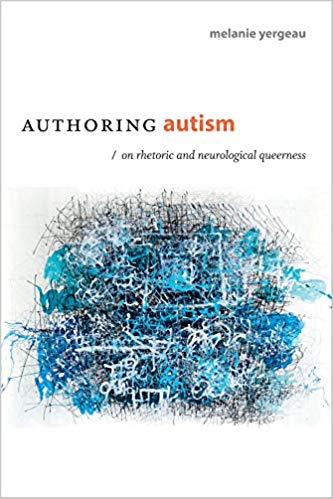
Like Dolmage, Melanie Yergeau is also interested in the way official narratives construct disability. In Authoring Autism, she provides an account of how autistics have been denied rhetoricity through the dominance of stories about autism from neurotypical (or allistic) people, as well as how autistic people themselves advance a rhetoric that reimagines power relations. Each of the chapters—“Involution,” “Intention,” “Intervention,” “Invitation,” “Invention,” and the short epilogue, “Indexicality”—addresses a site where autistics’ rhetoricity is contested in order to dismantle violent logics and amplify autistic voices.
One of Yergeau’s richest descriptions of dominant autism stories is her analysis in Chapter 2, “Intervention,” of Applied Behavioral Analysis (ABA), a method of behaviorist and operant conditioning that has become the gold standard in autism treatment. Yergeau traces ABA’s history as a treatment not only for autism, but for homosexuality and gender nonconformity. She further analyzes ABA proponents’ writings to show how ABA constructs autism as a problem needing correction and autistic people as blank slates to be constructed into a person. Meanwhile, recovery is always partial, the “process of faking the becoming of normativity” (105). Perhaps the most significant contribution of Yergeau’s ABA analysis is her description of how ABA co-opts the social model of disability. While the social model’s distinction between physical impairment and social oppression was meant to reveal social barriers needing systemic correction, ABA depicts the social environment as needing correction in order to reinforce the individual’s behavior, twisting the social model into a rhetoric of social control. This analysis is timely because, as Yergeau notes, it comes at a moment when the social model is being retheorized within disability studies.
While autistic stories percolate throughout the book, they take center stage in Chapter 4, “Invention.” Examples from autistic life writing help Yergeau “recoup rhetorics of involuntary acts” by presenting autistic figurations of echolalia (repetition of words and phrases). These writers illustrate how “echolalia’s meanings lie more in affect or anxiety than they do in the bounds of syntactic units” and denying that meaning as involuntary is a form of erasure (195). In this way, understanding autistic people’s rhetorical complexity means revising rhetorical commonplaces: Invention need not be positive or anchored in a particular moment in order to “count” as invention, and rhetorical success need not be defined socially. Crucially, these are theories of autism from autistic people, who “author the conditions of their rhetoricity” (200). These theories also reconfigure time orientations. As Yergeau draws on Burke to point out, behaviorist approaches leave no space for futures because they only observe behavior in the present, on top of tropes of autism as a kind of death or dying (e.g. autism as cancer and ABA as chemotherapy). In contrast, crip and queer perspectives see identity as fluid, “always-yet-to-be,” rather than seeing shifting identities and sexualities as developmentally delayed or immature (188-9).
Yergeau ultimately poses autistic rhetorics both to reimagine entrenched ideas about rhetoricity—often presenting rhetoric itself as violent—and to provide space for autistic people to assert their rhetoricity on their own terms. In doing so, Yergeau successfully weaves a thread between claiming and resisting, critiquing and producing rhetoric while enacting that rhetoric in her own style and presentation. She blends expected academic discourse with “inappropriate” content and language: profanity, discussion of her own “shit smearing” as a child, and other items that could be read as involuntary oversharing. One footnote even invites readers to decide if she is being sarcastic, suggesting diagnostic tools to quantitatively inform that decision. In these ways, Authoring Autism is scholarly and crass, biting and playful, resisting an easy or one-dimensional reading. If autistic rhetoric resists typical forms, Yergeau demonstrates by example.
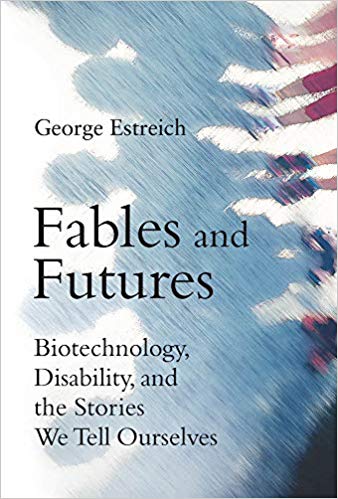
Like Yergeau, George Estreich writes Fables and Futures from the premise that stories about disability have overshadowed the voices of real disabled people. For Estreich, this idea extends to messages about biotechnologies, whether or not they mention disability directly. Estreich is a poet following up on a memoir, The Shape of the Eye, about his daughter Laura, who has Down syndrome. Fables and Futures is somewhere between a scholarly and popular book—in an interview, Estreich calls it his first book with an index—and presents a valuable example of relevant rhetorical analysis put in accessible terms for a wider audience (“Q&A”).
Estreich argues that disability is essential to discussions of emerging biotechnologies because it justifies their development and use. Whether and how we adopt these technologies and negotiate corresponding ethical issues will ultimately come down not to academic debate, but consumer decisions. This premise leads Estreich to public-facing messages about biotechnologies, which, even or especially when they are presented as mere factual accounts, have rhetorical impact, “descriptions with force” in the world (xvii). Accordingly, each chapter analyzes public messages about a particular biotechnology, including CRISPR Cas-9 gene editing, three-person IVF, and, spanning multiple analytical sites in Chapters 4-6, Non-Invasive Prenatal Tests (NIPT).
A key object of Estreich’s NIPT analysis is a Today show segment in which a couple receives their negative results in the form of a gift-wrapped present. Estreich presents the segment as a “public ritual of normalcy” that humanizes the technology by evoking more familiar rituals. While a negative result is equated with safety, Down syndrome is described as “risk” or “abnormality” and is even conflated with much more severe conditions. Meanwhile, medical experts in the segment tout NIPT as “noninvasive,” glossing over the need for invasive tests to confirm a diagnosis. Framing this TV segment as a “distant descendant of the telethons” used for decades to fundraise for disability and illness allows Estreich to bring in disability historian Paul Longmore and memoirist Erica Rapp, showing how charity efforts conceal messages of pity and even elimination under messages of awareness and acceptance. However, while the telethons presented disabled children as “living tragedies to prevent,” the Today show presents a “drama of a tragedy averted” (57). Throughout the book, Estreich similarly places his analysis within a longer history, specifically a history told by disabled people themselves.
Estreich ultimately links attitudes about disability to time orientations—not only did categories like “handicapped” and “retarded” emerge with the industrial era’s value on speed and efficiency, but public messages about biotechnology pit progress narratives against inclusion narratives. These progress narratives project a future of imagined diversity that ignores real bodies in the present and are at once forward- and backward-looking in their reliance on nostalgia. However, Estreich argues that progress and inclusion do not have to be at odds and that we can choose between futures. In one future, controlling genetic risk factors escalates into enhancing ourselves and overwriting diversity. In the other, we appreciate that we all face unknown risks and let go of the normal/abnormal distinction. Key to promoting a more inclusive future is critical awareness of both the “bold print” and “fine print” of messages about biotechnology and the dissonance between the two (82).
Given his point that disability is often an undercurrent in biotechnology discourses, an effective touch is that Estreich juxtaposes discourse that backgrounds disability with cases that foreground it. He also appropriately pivots to disability autobiography in the last chapter, which provides a space for disabled voices and allows Estreich to discuss the care needed when speaking for or about people with intellectual disabilities, as he does with his daughter. Overall, while Estreich does not have as robust a critical apparatus as Dolmage or Yergeau, Fables and Futures is filled with substantive, cogent analysis that speaks to contemporary exigencies. It provides an excellent model for rhetorical analysis that connects the dots between persuasion, disability, consumerism, and technology for a wider audience.
Conclusion
All three books investigate spaces where ostensible efforts to promote health bleed into enforcing normalcy, often with the help of questionable scientistic arguments. I want to conclude by highlighting two key mechanisms for this enforcement that pervade these books: the categorization of bodies and time orientations. Taken together, the three books provide a look at how past and emerging categories are established, resisted, and refigured. Dolmage demonstrates how seemingly neutral technologies like photography, on-the-ground practices like inspections, and written codifications contribute to categorization; how categories become enmeshed through, for example, the rhetorical darkening and disabling of the immigrant; and how such categories are mobilized in policies, attitudes, and oratory. Yergeau shows how ABA constructs autism as behavioral, involuntary, and spectral. Estreich shows how easily varied disabilities are conflated with each other and with suffering and disease, and how genetic testing marks and shapes the “abnormal” with help from an uncritical value on intellect and normalcy.
Another shared arena for the slippage between promoting health and enforcing normalcy is time orientations. Disabled people have long faced the notion that they need to be cured or eliminated, or that their disability is a kind of living death, so even imagining a future for disability or disabled people is a political act. Taken together, Dolmage and Estreich show how nostalgic stories about the past are intertwined with anxieties about the future and the presence of certain bodies in that future. Meanwhile, Yergeau shows how disabled people are already retheorizing their identities, sexualities, and rhetoricity in the face of dominant discourses. If eugenic policies and messaging have popularized biological arguments, these books offer impressive rhetorical steps toward understanding, dismantling, and replacing those arguments.
Works Cited
Dolmage, Jay. Disability Rhetoric. Syracuse University Press, 2014.
Estreich, George. “Q&A with George Estreich on Fables and Futures.” Interviewed by MIT Press. 21 March 2019, mitpress.mit.edu/blog/qa-george-estreich-fables-and-futures.
—. The Shape of the Eye: A Memoir. TarcherParigee, 2013.
KEYWORDS: Autism, Biotechnology, Disability studies, Embodiment, Immigration

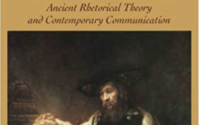
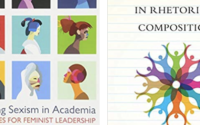

 Daniel Kenzie is an assistant professor of practice in the Department of Pharmacy Practice at North Dakota State University, where he teaches writing courses for pre-professional, professional, and graduate students. His research interests include professional writing, rhetorics of health and medicine, and disability studies, and his scholarship has appeared in Technical Communication Quarterly and the WAC Journal.
Daniel Kenzie is an assistant professor of practice in the Department of Pharmacy Practice at North Dakota State University, where he teaches writing courses for pre-professional, professional, and graduate students. His research interests include professional writing, rhetorics of health and medicine, and disability studies, and his scholarship has appeared in Technical Communication Quarterly and the WAC Journal.